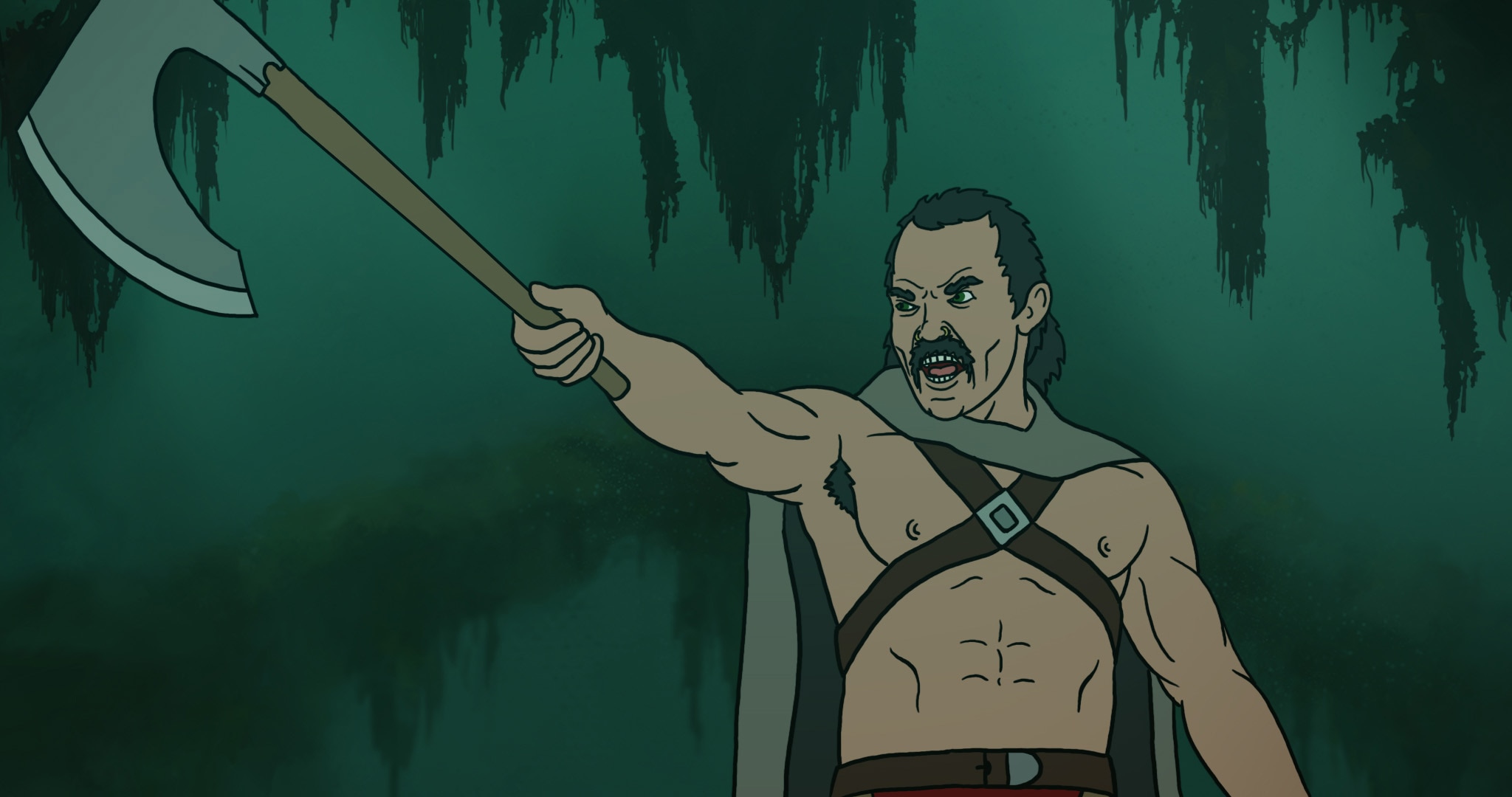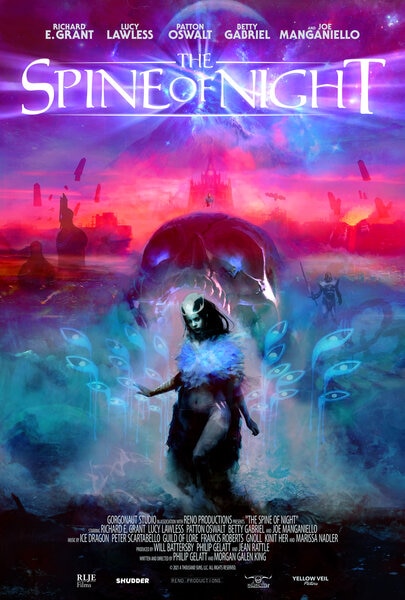Create a free profile to get unlimited access to exclusive videos, sweepstakes, and more!
'The Spine of Night' star Joe Manganiello on why it's fun to play a psycho with a mullet
The Magic Mike XXL star breaks down why his Heavy Metal-inspired new movie was too hard to pass up.

From making his big screen debut as Flash Thompson in Sam Raimi’s Spider-Man, to thrilling audiences as werewolf Alcide Herveaux in True Blood, to slaying as Deathstroke in Justice League, Joe Manganiello has been delivering genre goodness to the masses for years now. But with his most recent film, The Spine of Night, Manganiello tells SYFY WIRE he may have finally found the perfect genre sandbox to play in.
“If you were tasked with putting a dart into the bullseye of the types of films that I grew up with and loved, this is it,” Manganiello says of the “psychedelic, ultra-violent, rotoscopic, dark fantasy” film.
Also starring Lucy Lawless (Xena: Warrior Princess), Richard E. Grant (Star Wars: Episode IX - The Rise of Skywalker), Patton Oswalt (Marvel's M.O.D.O.K.), and Betty Gabriel (Get Out), Philip Gelatt and Morgan Galen King’s The Spine of Night is meticulously created via the process known as rotoscope animation. Like Ralph Bakshi’s The Lord of the Rings or Wizards, Gerald Potterton’s Heavy Metal, and Bakshi and Frank Frazetta’s Fire and Ice, the animation is painted on top of live action film.
“I love the type of aesthetic that this film hearkens back to, and the lineage that it follows from –– you know, late ‘70s, early ‘80s... Ralph Bakshi, Frank Frizetta, Fire and Ice, Wizards, Lord of the Rings, Heavy Metal… I haven’t seen something like this in a long time,” Manganiello says. “So to be a part of that, it was just a no-brainer for me. I mean what a fun role, are you kidding me: mustache, mullet, psychotic… I mean, it’s pretty fun to play.”
Manganiello gives voice to said mullet-wearer Mongrel, though he probably speaks more eloquently with his battleaxe than his actual voice. “He’s a power-mad psychopath who will stop at nothing to achieve his goals… it’s the tactics that he uses that make him questionable, but also make him a fun character.”
So fun, in fact, that Manganiello jokes he probably would have done the part for free, on account of how much fun he had playing Mongrel.
“I always say you’re not having fun acting until you can do something you could serve a life in prison for,” he says. “You know, that’s kind of the fun of doing what I do, is creating a safe and fun environment to do really crazy things, and this is a really crazy character. For me, the more out there the character is, the more fun I’m having.”
The different aspects of the anthology story are tied together by a magical MacGuffin known as “the Bloom,” which Manganiello says represents something different for everyone who encounters it, but metaphorically it’s “a quest for knowledge, a quest for power.” And Mongrel loves power.
Of course, power doesn’t just get corrupted in fantastical realms. As such, The Spine of Night does what all great fantasy accomplishes: it holds up a mirror to our actual times.
“All great fantasy is a morality tale in which we can watch these very heightened versions of ourselves in the not so distant past, and watch these mistakes played out, and see how we could have done things differently,” Manganiello says. “Knowledge and power are big themes in this film, and how people handle it, how it corrupts people, how they try to defend themselves from being corrupted by it.”
Granted, in this case, morality is hard to come by, and violence is everywhere. But Manganiello thinks that just adds to the film’s poignancy.
“Violence happens, it’s part of humanity, it’s part of our history, and when it comes to a story that centers around power and corruption, and a medieval setting… [have] you ever visited a castle, like an old castle? I’m in Ireland right now, and I’ve just been visiting these 1000-year-old, 800-year-old castles and that’s a hard life, man. It was a hard life for the people living in those castles, let alone for the villagers and peasants living at the bottom of the hill. Life was hard,” he says. “So if you’re setting your film at that time, you’re not doing the job justice by glossing anything over. So it’s a harsh world.”
That said, Manganiello is no stranger to ultra-violent entertainment; he was in True Blood after all.
“True Blood was incredibly violent ... I know people who couldn’t watch it because of the amount of blood, and that’s not getting into the amount of sex. … You know the episode that my character showed up in, which was Season 3, Episode 3, the ending scene is of Bill with his maker, Lorena, and they have this scene together,” Manganiello says. “It’s one of the most hyper-violent, insane scenes ever filmed… and it’s the final scene of the episode, and when it cuts to black, there’s just silence for about five seconds and then everyone starts screaming. It’s incredibly effective when used properly.”
Somewhat of an expert on the subject, Manganiello feels like The Spine of Night uses violence perfectly properly.
“You know what it’s like? It’s like heat levels in food. You don’t want the heat level to be so crazy that you can’t finish the meal or eat it, but you don’t want it not present. There’s a nice heat level where you go ‘Wow!’ And it adds a whole level to the meal that wouldn’t be there otherwise. It’s a whole different category, that if it’s mixed in properly with the food it just accentuates the entire experience,” he says. “And I think that, especially looking at the lineage of rotoscope animation, and how saccharine entertainment has become, I think the filmmaking team knew what they were doing, and they did it perfectly: It’s the perfect amount of heat… the perfect heat level.”
The Spine of Night is now in theaters and on demand.



























